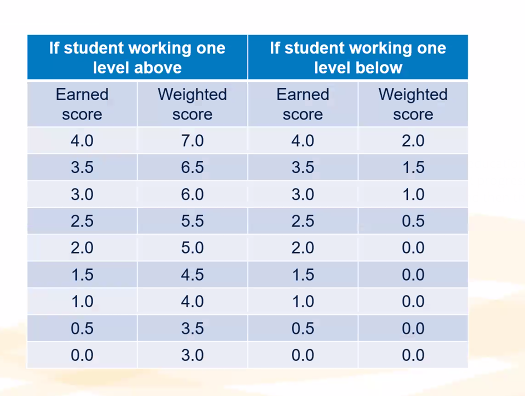
High school is a lot of things…and one of those things is that it is one long four year old game based on the rules set for grading. Students can get points added or subtracted for behaviors. At some schools they might get more points for taking an AP course. Most traditional schools hand out zeros from which one can never rebound. What is included in the averaging to set the GPA can also vary.
In traditional schools, every teacher gets to create their own grading game. In more modern schools transitioning to mastery learning or competency-based education schools or even districts create one grading system that seeks to emphasize learning not the pursuit of points. It isn’t easy to do in high school as college admissions value the GPA and the NCAA as well as many scholarship programs require it. Thus, there is always a conversion policy of how mastery-based grading rolls right up into one number to reflect the young person on the brink of adulthood. One number to tell the world who you are.
Yesterday in a webinar I heard an outlandish and horrifying grading policy that was supposedly one form of competency-based grading. My stomach is still turning because I can’t believe that a major education organization wouldn’t have someone on the staff to be able to see it for what it is – a technique to reinforce the status quo and most likely a powerful tool to be used against students of color and low-income students.
Here is what they suggested as a way of responding to parents who want their students to be recognized as high achieving:
- If students are learning at levels above their grade level they receive higher weighting to their scores…
- If they are below grade level they receive lower weighting.
I instantly thought of predatory lending where the poorest people with the least options for credit or loans pay the highest amount. Sure, you can argue that there is greater risk but in fact the only reason that there is more risk is that the interest rates are enormous and there are conditions that make it nearly impossible to ever pay off the loan. It’s all about the rules of the game.
This type of predatory grading policy privileges the privileged and penalizes students that might enter school with gaps, or had taken a year off to work while their parents or sick or spent part of a semester in juvenile detention because their school called the police rather than parents when there was a fight. This type of predatory grading, just the lending, would make it nearly impossible to recover. And check out all the zero’s for students that would be making progress but at the grade level below their age — no recognition for students (or their teachers) for persevering against all kinds of odds.
Keep an eye out for this kind of effort – white supremacy is a shape shifter and we can’t let it sneak into the world of competency-based grading. And let’s figure out how to balance growth with achievement. Building 21 has figured it out, so can everyone else.



Thank you for immediately calling this out, I will keep my eye out for this type of practice that is the type of examples I give as the antithesis to CBE!